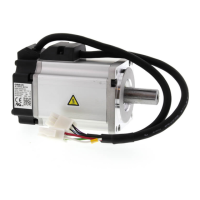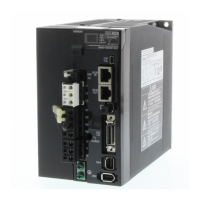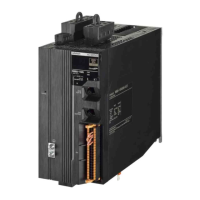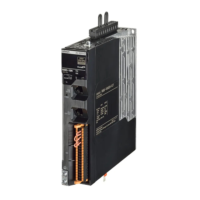3-45
3-2 Servomotor Specifications
3
Specifications
R88M-G4K510 R88M-G6K010T
4.5 kW (Without Oil Seal) 6 kW (With Oil Seal)
Temperature Characteristics of the Servomotor and Mechanical System
• OMNUC G-Series AC Servomotors use rare earth magnets (neodymium-iron magnets).
The temperature coefficient for these magnets is approximately −0.13%/°C. As the temperature
drops, the Servomotor's maximum momentary torque increases, and as the temperature rises, the
Servomotor's maximum momentary torque decreases.
• The maximum momentary torque rises by 4% at a normal temperature of 20°C compared to a
temperature of −10°C. Conversely, the maximum momentary torque decreases about 8% when
the magnet warms up to 80°C from the normal temperature.
• Generally, when the temperature drops in a mechanical system, the friction torque and the load
torque increase. For that reason, overloading may occur at low temperatures. In particular, in
systems that use a Decelerator, the load torque at low temperatures may be nearly twice as much
as the load torque at normal temperatures. Check whether overloading may occur at low
temperature startup. Also check to see whether abnormal Servomotor overheating or alarms occur
at high temperatures.
• An increase in load friction torque seemingly increases load inertia. Therefore, even if the Servo
Drive gains are adjusted at a normal temperature, the Servomotor may not operate properly at low
temperatures. Check to see whether there is optimal operation even at low temperatures.
Use the following Servomotors in the ranges shown in the graphs below.
Using outside of these ranges may cause the Servomotor to generate heat,
which could result in encoder malfunction.
Precautions
for Correct Use
100%
70%
85%
100203040
Without brake
Rated Torque (%)
Ambient
temperature
With brake
100%
85%
90%
100203040
Without brake
Rated Torque (%)
Ambient
temperature
With brake

